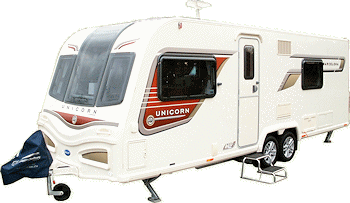
My virtual Caravan Site
BOCC Visit
May 2014
Our Unicorn additions
Alde Heating and Water System
Bailey Unicorn
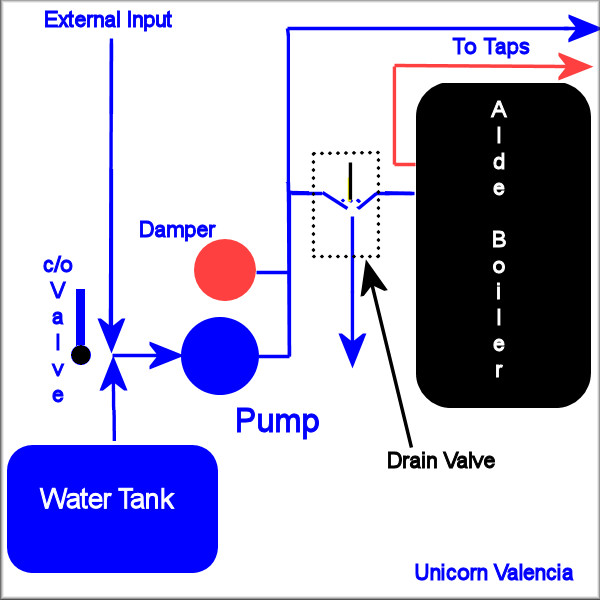
Water system on our Bailey Unicorn Valencia
Alde Hot Water/Heating System
| The Alde system comprises of a Boiler that heats the
fresh water to feed the hot water system and the heating system fluid
that is circulated by a 12v pump round the caravan in a continuous
circuit that returns to the Boiler. The Fluid passes through a series of
Radiators and at some point rises to a Header Tank where you can see the
level and top up if necessary. The fluid is a mixture of 60% water and
40% ethylene glycol antifreeze. This needs to be replaced every 2 years.
Alde UK use Comma Super Coldmaster Concentrated Antifreeze with 2 year
Longlife protection. One of the main problems that people get with the system is air trapped at various points in the fluid circuit. On the Unicorn that I have there are supposed to be 5 bleed points dotted round the system. The only obvious one is the one on the top of the bathroom radiator and as this is a high point in the system will trap most of the air and should be checked on a regular basis. The Dealer should have ensured that the system is air free as they have a special purge tool to ensure this. |

Alde Control Panel

| 1 |
 |
Internal temperature setting (adjust up/down) |
| 2 |
 |
Boost Hot Water (On/Off) If selected, switches off automatically after 30min. |
| 3 |
 |
Gas (On/Off) |
| 4 |
 |
Mains Electric Setting 1, 2, or 3Kw (select value) |
| 5 |
 |
12v Pump running indicator (only illuminated when Pump running) |
| 6 |
 |
Mains feed to Boiler ON (only illuminated when power feed to Boiler is on) |
| A B | Moves the selected control left or right. Symbol flashes when selected | |
 |
Boiler ON/Off selection (On indication needs to be illuminated to switch the system ON for water and or heating) | |
| Hot water no heating needed | ||
A lot of people find it difficult to set the system to heat the water when the heating is not needed. These are the steps required to get hot water if you are on an electric hook-up i.e. mains. A/ on the control panel select the system  to ON to ON
B/ Set the Internal Temperature setting  lower than the ambient
temperature (I set mine to 10C) this stops the pump running and hence no
heating is provided. lower than the ambient
temperature (I set mine to 10C) this stops the pump running and hence no
heating is provided.C/ Select the Mains Electric Setting  to suit the supply (on a
Site with a 16A supply I set mine to 3(kW)) to suit the supply (on a
Site with a 16A supply I set mine to 3(kW))D/ Turn on the mains switch to the system (on my Unicorn it is over near the kitchen tap) You can confirm the mains is on to the system when you see the  symbol
illuminated on the control panel. symbol
illuminated on the control panel.The water will now heat up. Part of the confusion is the Hot Water Boost setting  When this is selected (i.e.
first illuminated) it increases the boiler temperature for 30 min to
boost the amount of hot water available for say showers by providing the
hot water at a higher temperature. When this is selected (i.e.
first illuminated) it increases the boiler temperature for 30 min to
boost the amount of hot water available for say showers by providing the
hot water at a higher temperature. |
||
 |
 |
| Typical Radiator | Towel Rail, note the water does
not flow through it, it heats by convection. Note bleed valve on the top |
 |
 |
| Boiler | Boiler mounted 12v Circulation Pump |
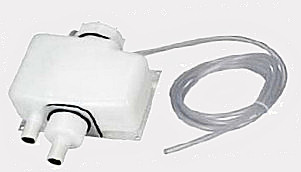 |
 |
| Header Tank | Header Tank Cover |
| I am often asked what I think of the Alde system in
comparison to the Truma fire with blown air distribution. I had the
blown air system with most of my previous vans and had found the best
settings and way to use it. But, we always had problems on our fixed bed
layout Bailey Caravans with getting the front air outlets to produce
warm yet alone hot air. The main problem being the long route of the
ducting with quite a length outside under the van. We insulated the
external pipe work which helped but did not cure the problem. The
heating system always kept the van at a good temperature but it wasn't
fully 'comfortable' and needed a bit of manual intervention on the
settings to keep it stable. The separate hot water system was fine. When we changed our van to one with the Alde heating/water system, this is what we found: a) The van seemed to take longer to heat up, but this was deceptive, as the whole fabric was warming, not just the air as it was with the Truma fire and blown air system. b) When the required temperature was reached, as set on the control panel, it just stayed there with no intervention. c) The whole van was warm and it was very 'comfortable' with no cold spots. d) Being able to set the clock and system to automatically set a different overnight temperature between set times was a major advantage and meant getting up to a warm van without overheating whilst sleeping. e) The boost water temperature setting gave us plenty of hot water for showering in the van. f) The lack of the fire gave us more useable space and a better layout in the van. |
Alde heating as explained on a Bailey Unicorn
click on photos for larger image
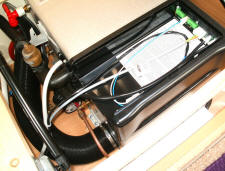 |
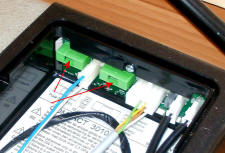 |
 |
| 2 x 3.15A
5x20mm Fuses F-type fuse, fast blow |
||
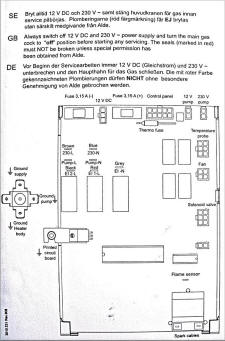 |
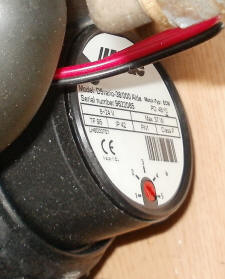 |
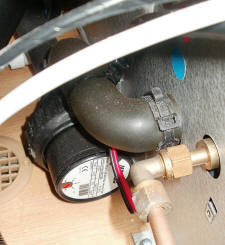 |
| 12v Pump set to speed 2 as recommended | ||
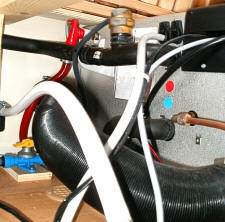 |
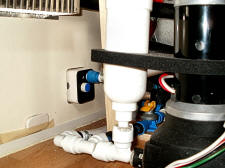 |
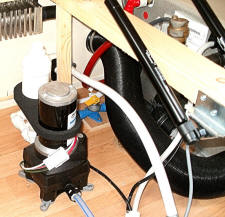 |
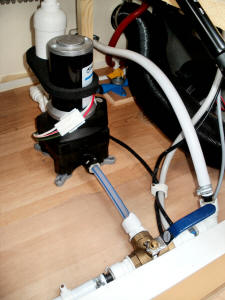 |
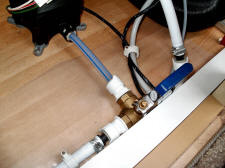 |
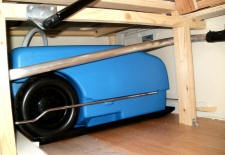 |
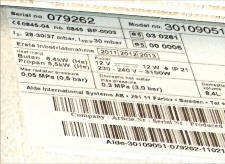 |
||
|
The Which Antifreeze and how often to change How often do you need to change the Antifreeze solution? Well, it depends on the solution that is in there now. Most UK manufactured caravans, certainly my Bailey van, are filled with two year Antifreeze. This means that the solution should be changed when the van is two years old. The reason for changing at this time is that although the anti freezing part is still working, the corrosion inhibiters included in it are reaching the end of their effectiveness. Alde recommend using a 5 year life solution and you should ensure this is what is used when you get the fluid changed. There is a lot of talk about the need to fully flush the system on changing the fluid and of the non compatibility of Antifreeze solutions. Correspondence with Alde can be read below, but, the main thing that comes out of it is that Comma Xstream G40 is the one to use as it is fully backwards compatible and considerably cheaper than Alde's own branded one. I have found that Amazon is the cheapest source for it HERE So, yes it should be flushed on changing but some of the old fluid being left will not react with the new Antifreeze solution.
Alde Customer Services Thank
you for your enquiry. If you
were replacing a blue 2-year silicate-containing antifreeze with a red
5-year OAT-containing antifreeze, then yes, you'd want to thoroughly
flush first.
|
||
|
Bleeding the Alde system One of the main problems can be air trapped in the system especially from new. This can cause the fluid not to circulate around the system. The Dealer should have ensured this is not a problem before delivery If the mixture is not circulating, the Alde boiler will just fire up and then shut down when it has heated itself and volume of glycol within the boiler, up to its own internal thermostat temperature. If you have it filled with water for the taps that
water gets heated up at the same time. The room temperature thermostat in the user control
panel controls the space heating. If the van is warm enough nothing
happens other than the boiler fires up to retain it and any water for
the taps at its set temperature. If the van is too cold the room thermostat starts the
pump that circulates the glycol mixture through the radiators. If the
pump can circulate the glycol then the hot glycol moves round the
system, cold glycol goes into the boiler, the boiler thermostat then
starts the gas burner or switches on the mains immersion heater. The
system then circulates and heats the glycol until the room thermostat is
happy and stops the pump. The boiler just keeps on heating up till its
thermostat gets the glycol in the boiler itself up to temperature and
then shuts down. Sometimes, if air is trapped, the pump cannot circulate the glycol. The reason is that it is a small pump just capable of circulating the glycol around the pipe work. This is not a design fault as anything more capable will be noisy, and actually not necessary if the glycol system is full of glycol. The trouble is that if the system contain trapped air bubbles in the circuit pipe work as it is routed around the caravan at raised points in the pipework it needs 'some force' to shift it. Air stuck in a raised pipe is not naturally inclined
to move on under the very low pressure of a weak circulating pump, hence
the glycol as a whole can't flow and despite the pump being on we don’t
get warm glycol circulating round the system. If there are several air
bubbles these add to the pressure the pump needs to get things
moving. In a well-designed system there will be an air bleed
valve on each high point where an air bubble can lodge. Bleed all these
air bubbles out and the pump should circulating the glycol and the
system gets warm. These are real air bubbles not the micro bubbles that
self purge when pushed along to the header and round again until they
progressively disperse within the header. If trying to solve the problem yourself, locate and
use the bleed nipples. Switch on the pump and as soon as it manages to
circulate the glycol the process of getting out those additional micro
bubbles starts. If we assume all is well and switch off to early, there
is a danger the micro bubbles will coalesce and form a bigger bubble
somewhere in the pipe and the problem may re-occur. Realistically once
you have it well purged it will go on until it's time to replace the
glycol. This glycol mixture has corrosion inhibitors and these fail with
time and exposure to air, so replacement is needed sooner or later. A decent dealer is not going to have all this hassle with bleeding and accessing all the bleeders, they use the Alde special purging pump. This unlike the low pressure circulating pump can develop the pressure to 'force' the glycol and air round the pipe work and the air 'escapes' in the header tank and within minutes the system is full of fluid and no air. |